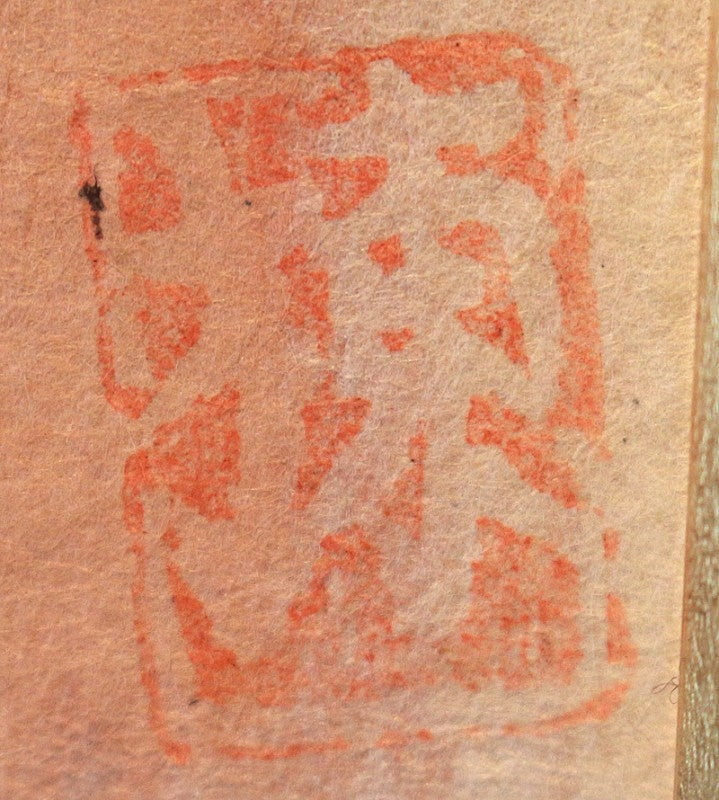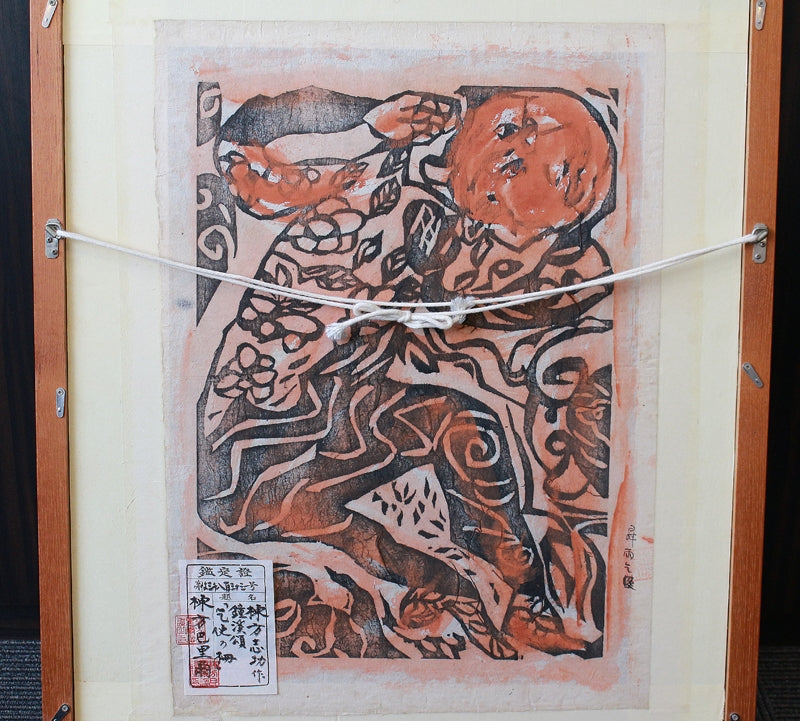1
/
of
12
Product number: SKU:24660
24660 MUNAKATA Shiko (Shokei-sho "The Begging Envoy's Fence" (MUNAKATA Paris))
24660 MUNAKATA Shiko (Shokei-sho "The Begging Envoy's Fence" (MUNAKATA Paris))
Sold out



【Related categories】
Share
































Height 50.0cm (70.0cm including frame)
Width 37.0cm (57.0 including frame)
He has exhibited works such as "The Astonished Ones" at the Venice Biennale, an international contemporary art exhibition, where he won the first International Print Award.
Mune Shiko established his own unique style of composition and produced works using a technique called urasai, in which paint is applied from the back of the printing block.
He also met Muneyoshi Yanagi, who recognized his talent and deepened his ties with ceramic artists from the "Gei Undōdo" (a movement to make use of the beauty of ordinary and refined items, as stated in the "Statement of Purpose for the Establishment of the Japanese Art Museum").
Needless to say, Munakata Shiko and the ceramicist Kawai Kanjiro have been friends ever since the Mingei Movement. Munakata Shiko's first postwar woodblock print, "Shokei Sho", 24 panels, is a series created in honor of Kawai's kiln in Kyoto, "Shokei". Instead of his hometown of Aomori, Munakata chose to evacuate to Fukumitsu-cho in the Hokuriku region, where he could live freely without ties. In addition to his creative activities, Munakata would be invited to a nearby elementary school to give special classes, and it is said that he would invite anyone who visited him into his studio and teach them how to carve and print woodblock prints. Surrounded by nature such as Mt. Tateyama and Toyama Bay, and interacting with the simple children and people of Fukumitsu-cho, Munakata likely spent his days in comfort and happiness. He spent the most energetic years of his 40s in Fukumitsu. Shortly after evacuating to Fukumitsu, he was asked by Kawai Kanjiro, a fellow member of the Mingei movement and a ceramist who guided Munakata, to paint six large-scale works for an exhibition of Kawai's new works. Kawai paid the highest praise to these paintings. Around the same time, he created his first postwar prints, a series of 24 panels entitled "Shōkei-inspired prints." "Shōkei" is the name of Kawai's kiln in Kyoto, and is a series of works created in honor of Kawai. He also developed a wide circle of acquaintances with various artists, including painters, poets, and literary figures, who had evacuated to the area, and contributed to the development of local culture. At the time, many of the artists who had evacuated to nearby towns included printmaker Oda Kazumaro, poet Yoshii Isamu, ink-wash and haiku painter Shimomura Tameyama, novelist Iwakura Seiji, calligrapher Osawa Masayasu, and haiku poet Maeda Fura, and he became close friends with these artists. His second daughter, Chiyoko Koizumi, reminisced about those days, writing, "At Riu Gasai, I was like a fish in water, and my production progressed more than ever before" (from "Seikado"). It was a time when, surrounded by the rich natural environment of Fukumitsu, he was able to freely paint whatever he wanted to paint.